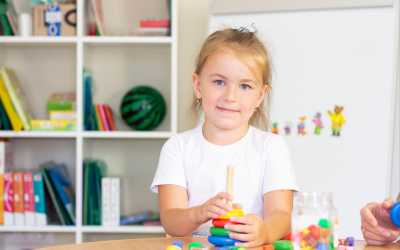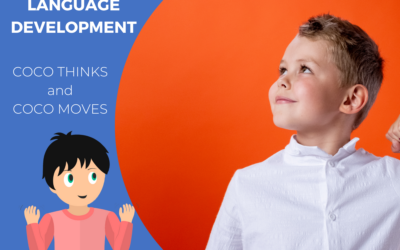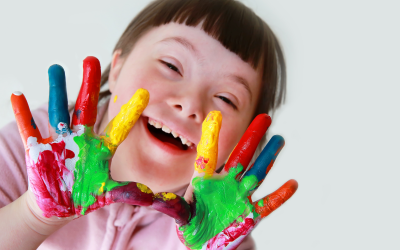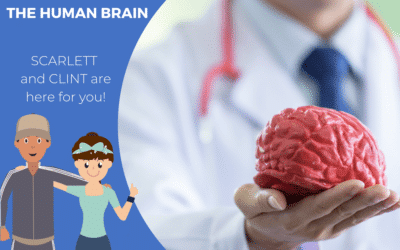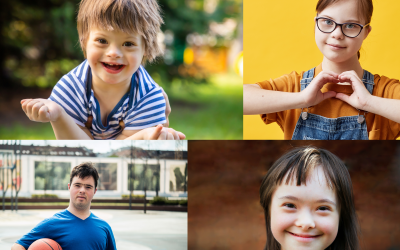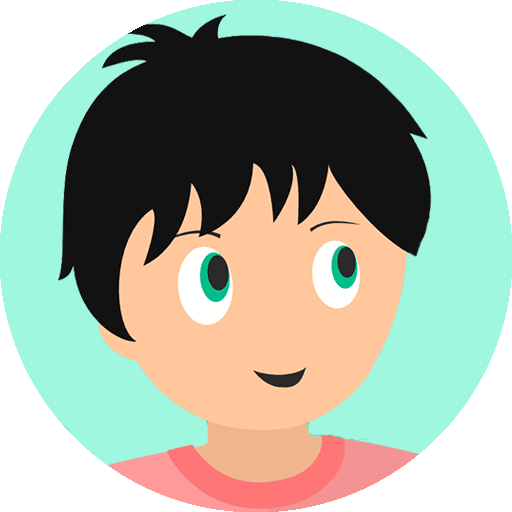In this webinar, we will give you keys to support your students suffering from DYS disorders: dyslexia, dyspraxia, dysphasia, dyscalculia or dysorthography.
There will be a first theoretical part, with the different signs of each disorder and the difficulties that a child may encounter during the educational activities proposed in class. Then there will be a practical part, with tips and ideas for adaptations to implement in the classroom. These adaptations will allow children with DYS disorders to learn at their own pace and share activities with their peers without being excluded.
Teacher training for DYS disorders
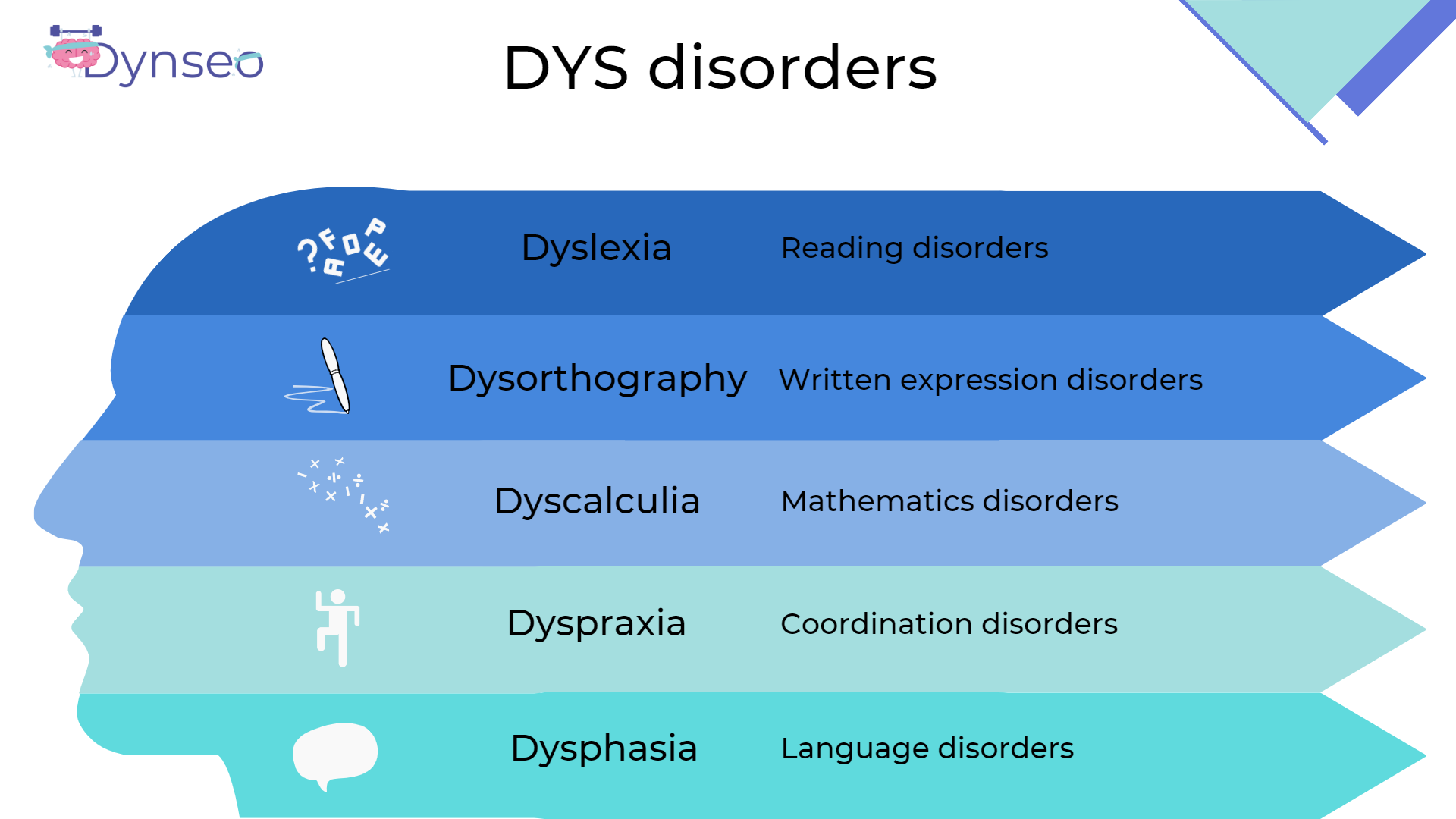
Often, DYS disorders can be identified together with each other, so a child can have several weaknesses at the same time. Dyslexia is often associated with dysorthographia, for example.
It is therefore important to know each disorder in order to understand the child’s difficulties and to be able to adapt the exercises or the school environment. These adaptations will allow the child to learn at his own pace and to share activities with other students without being excluded from the class.
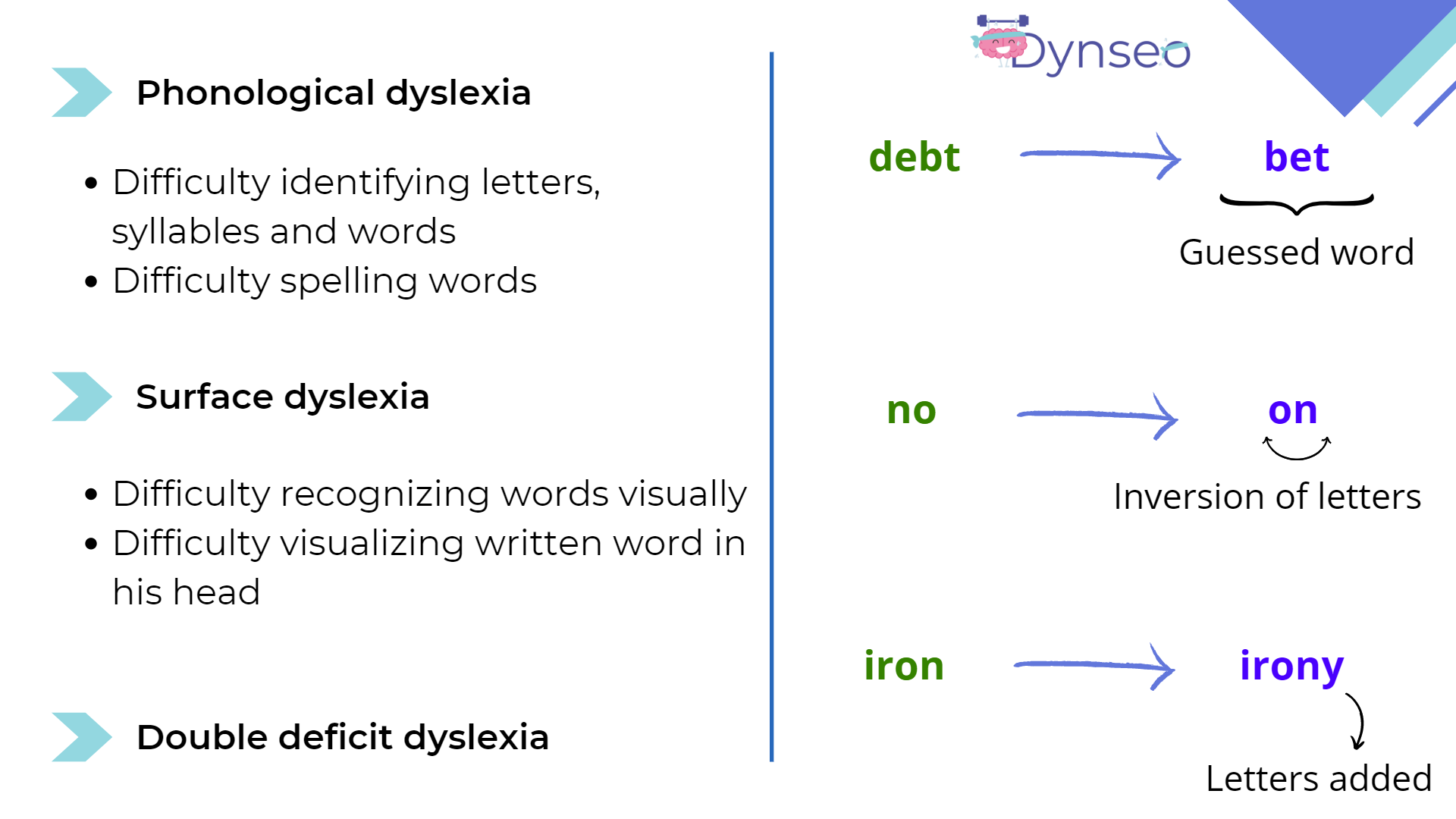
Different types of dyslexia
Here we will walk you through the different types of dyslexia.
- Phonetic dyslexia, which is a difficulty at the phonetic level and therefore of the sound. The child has difficulty identifying letters, syllables, or words by sound.
- Surface dyslexia which is a visual difficulty. The child has difficulty recognizing words visually, or difficulty seeing the written words in his or her head. In fact, when we read, our brain can identify the word immediately, without having to read each letter. For dyslexic children this mechanism does not work
- Double deficit dyslexia which is characterized by phonetic and visual difficulties. People with double deficit dyslexia tend to have difficulties in two different areas of reading, such as rapid naming and phonological awareness.
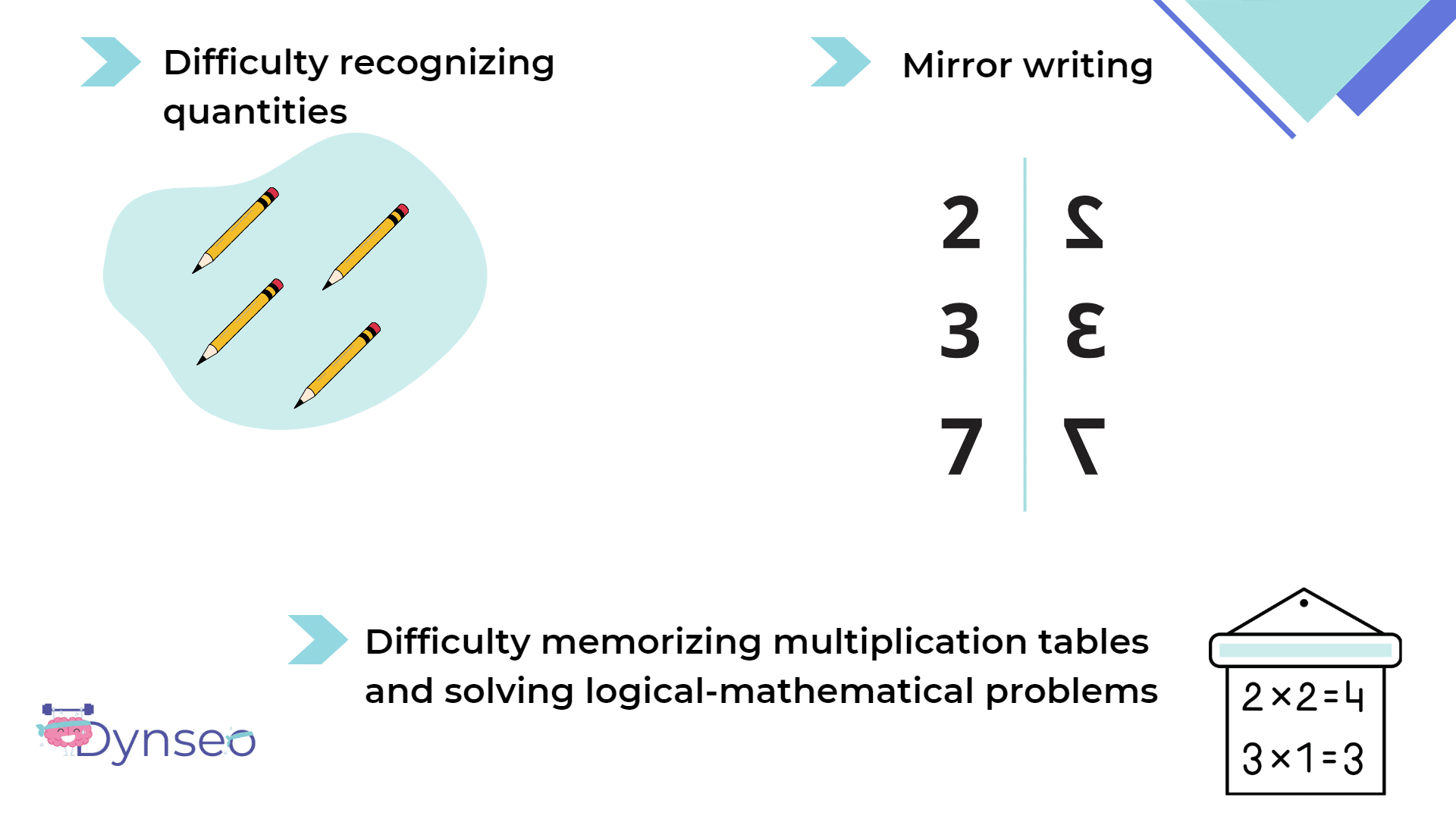
Signs of dyscalculia
Dyscalculia is a disorder related to numbers in several aspects: difficulty in the concept of quantity, visual difficulties, difficulties in mathematical logic.
Here are the main signs of dyscalculia:
- difficulty recognizing quantities: the child must count each time how many objects are presented to him in the picture, a task that takes more time,
- mirror writing: the child cannot create a mental image of the numbers so he/she sometimes write them backwards.
- Difficulty memorizing multiplication tables or solving logical-mathematical problems: the child is unable to memorize information related to numbers and therefore is unable to manipulate them to solve problems.
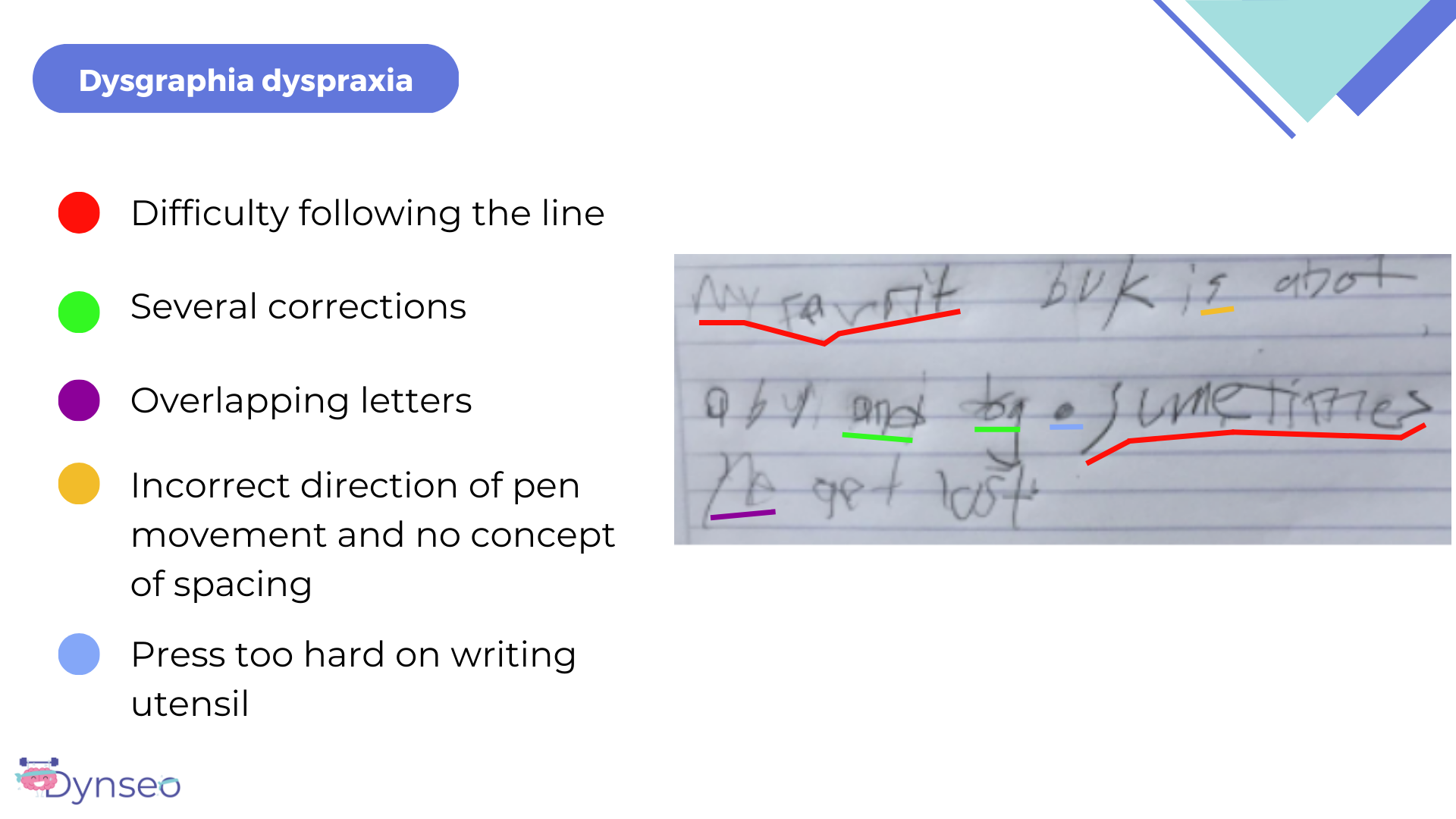
Dysgraphic Dyspraxia
Dysgraphia is a disorder related to the graphic gesture where the child’s writing is almost illegible. This difficulty is related to dyspraxia since the child cannot coordinate the pen’s movements on the paper.
If the child has no reference points, he/she cannot follow an imaginary line, he/she will misspell letters and therefore try to make corrections (which will make the text even more difficult to read). In the writing you can see that there is not enough space between the letters or that they are poorly connected to each other.
Dysorthography, which is a difficulty in spelling words, should not be confused with dysgraphia, which is a difficulty in the graphic gesture.
Fragility related to dysorthographia
Dysorthography is related to the spelling of words. In general, a child learns to read before he learns to write, so if there is a reading problem, there is bound to be a spelling problem.
When we read a word, our brain always registers the order of letters and therefore it can memorize it. When there is a reading difficulty, the meaning of the word “bear” can be hard to get at first glance as you can also find “bare” and “beer” that are close in writing and pronunciation… So the brain can’t stabilize the order of the letters for this word. By not having a fixed order of letters, the writing of the words will be random. Dysorthographic children often have a phonetic writing style, based on sound rather than on grammar rules.
The adaptations to be put in place
There are several adaptations that can be put in place to support children with DYS disorders during school activities. An aid may not be helpful or needed for all children, so try to see if the adaptation makes it easier for the child or not. Every child is different so adaptations must be different.
For dyslexia it is important to make the text easier to read. For this you can use specific fonts, like the Open Dyslexic font. Another option is to choose color-coded text. You can color the lines in two different colors or have the words colored according to the syllables.
To make the text readable it is important to use a large font size. Finally it is important to justify the texts or align them on the left. This avoids having words cut off to go to line, the text is more airy and the child can more easily find his way in space.
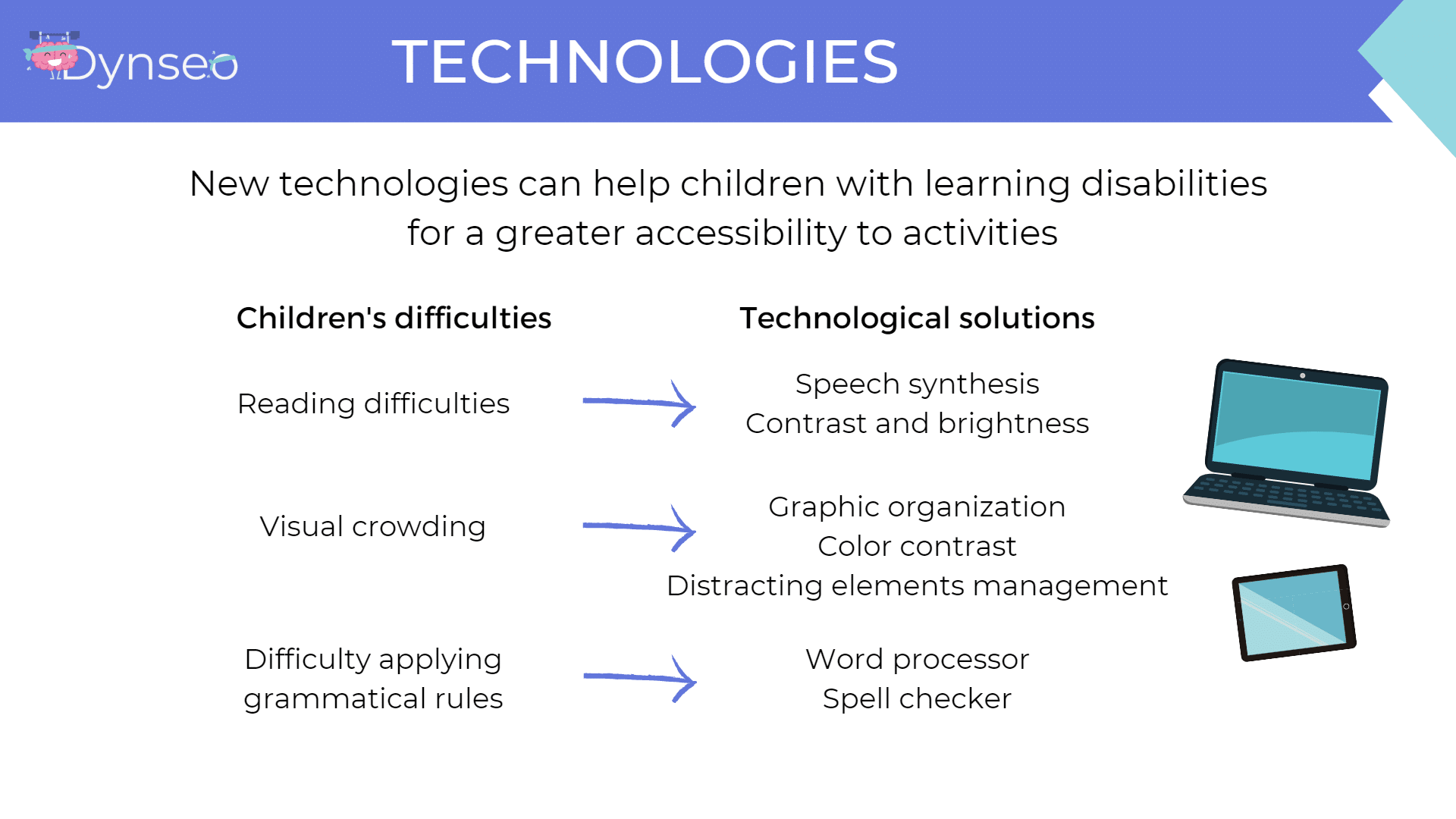
Technology and DYS disorders
Children with DYS disorders may need compensatory tools. New technologies can therefore be very useful. Compensatory tools can help erase or reduce the child’s difficulties. Thanks to these tools, the child can access the activity without having to put all his effort in compensating for his difficulty. He can then focus on the task at hand.
For example, a computer or tablet can have a voice synthesizer to help dyslexic children or a spelling reviewer for dysorthographic children. In addition, all the elements of the screen can have contrast and brightness increased and adapted according to their specific needs.
The COCO THINKS and COCO MOVES app to help DYS children
In technologies there are also applications that can be used with children with DYS disorders. COCO THINKS and COCO MOVES is an app with over 30 educational games. Games can be used to improve cognitive functions such as attention, memory, logic or language. Some games can also be used as adapted exercises for children with DYS disorders. For example, you can find audio instructions, games with syllables or gap-filling texts.
Moreover, after 15 minutes of screen time, the application stops and offers the children a sports break. The games are more or less physical (there are also relaxation games). This break allows the children to clear their brains and rest so that they are more motivated to do the following activities. The sports break also allows children to learn to step away from the screen and make good use of it.
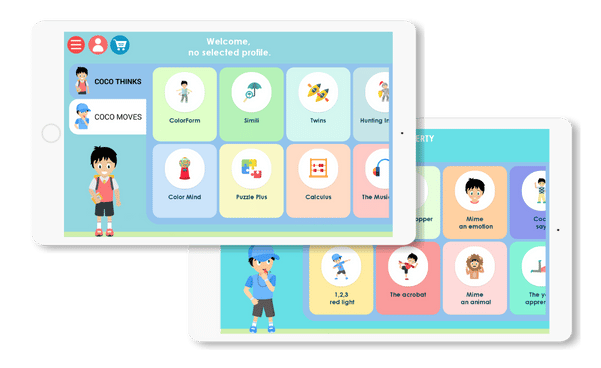
COCO THINKS and COCO MOVES more than 30 educational games and a sports break every 15 minutes of screen time
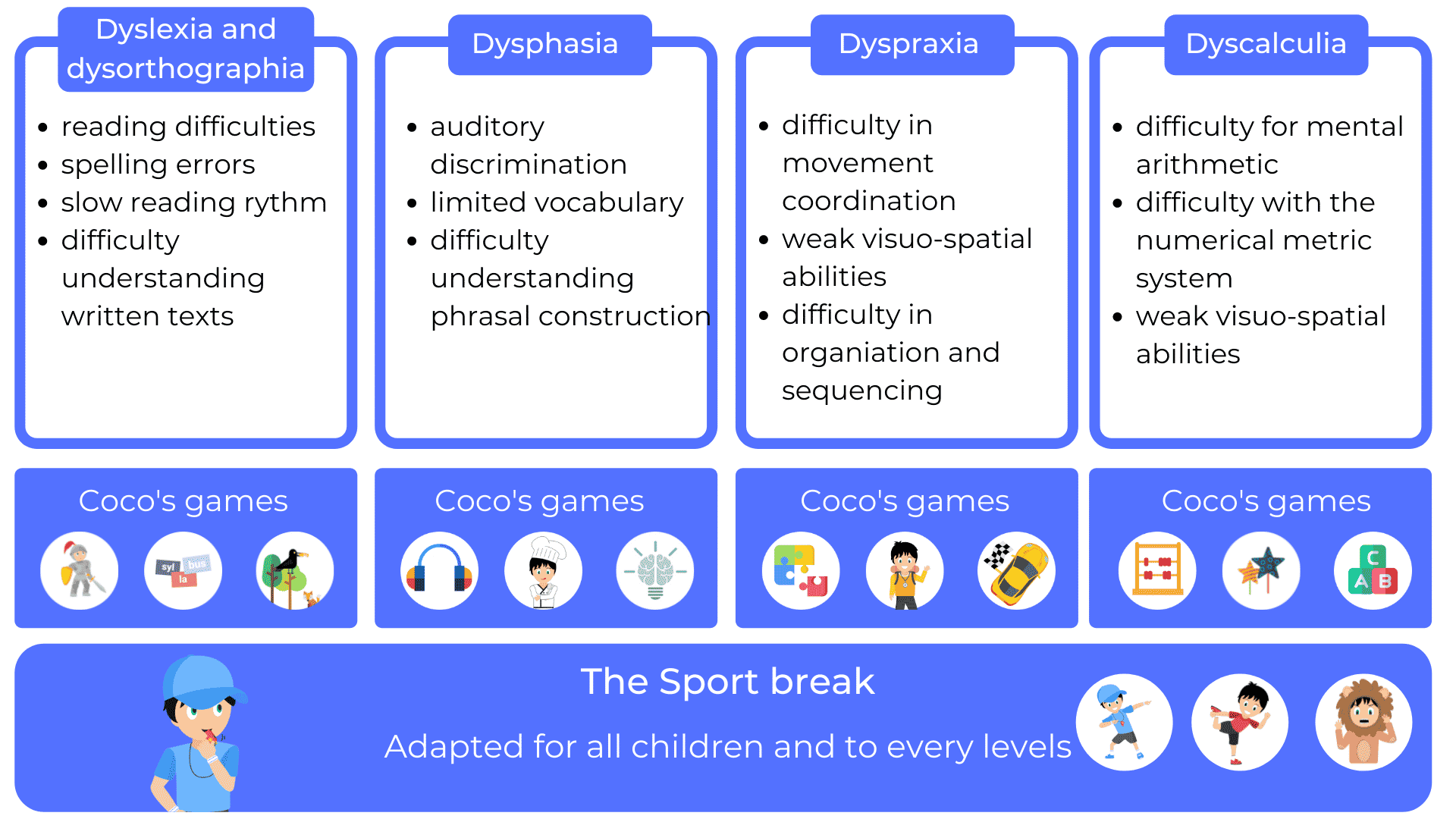
Accompanying DYS children: an article with examples and practical strategies
Other articles that might interest you:
Supporting children with autism
Dynseo proposesSUPPORTING CHILDREN WITH AUTISM with COCO THINKS AND COCO MOVESDynseo and its team are very much...
Supporting DYS children with COCO THINKS and COCO MOVES
Dynseo proposesDYS disorders with COCO THINKS and COCO MOVESOur educational and pedagogical games program COCO THINKS...
Language development
Children communicate from birth with movements, crying, looking at each other or with smiles. After only a few months,...
Supporting children with Down Syndrome with Coco
Dynseo proposesDOWN SYNDROME with COCODown syndrome is a non-hereditary chromosomal abnormality that leads to the...
Supporting people after a stroke
Dynseo proposesStroke with CLINT, your brain training coachThe Dynseo team is very involved in helping people who have...
Supporting someone with Alzheimer’s
In this guide, we will detail how SCARLETT can be used for supporting someone with Alzheimer's. SCARLETT is a...
10 myths about the human brain you didn’t know
The brain is an incredible muscle, however there are many things we do not know, and what we do know is not always...
Using Digital Tools to Support Students with Special Educational Needs
Special Educational Needs (SEN) encompass a wide range of learning difficulties and disabilities that can hinder a...
Down Syndrome and Communication: Facilitating Interaction with Visual and Interactive Supports
When we think about Down syndrome, we often recognize it as a genetic condition that affects physical and cognitive...
How to Track Progress in People with Down Syndrome Using Digital Tools
Down syndrome, a genetic condition caused by the presence of an extra chromosome 21, affects approximately 1 in every...



